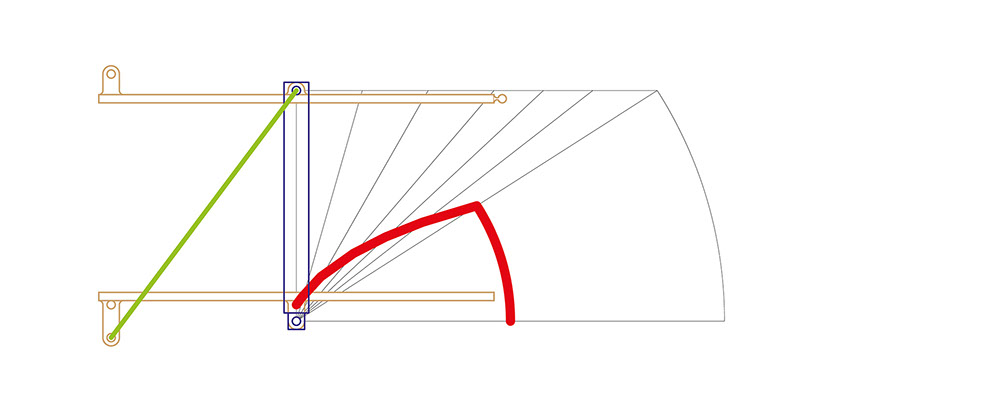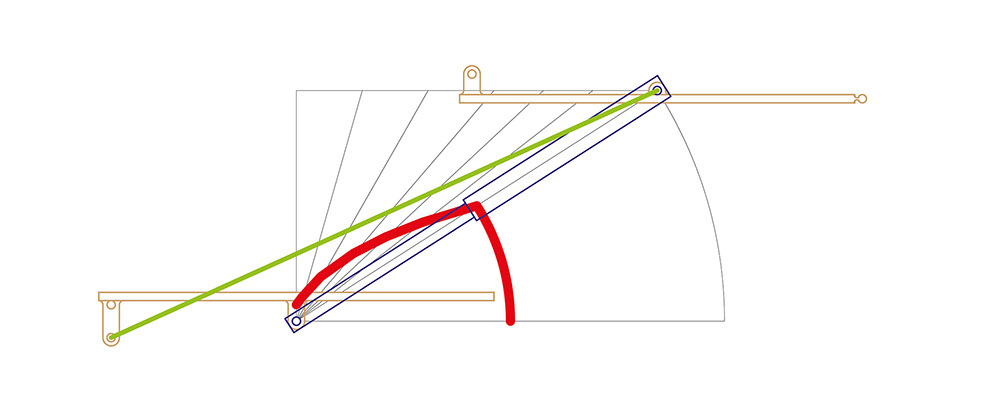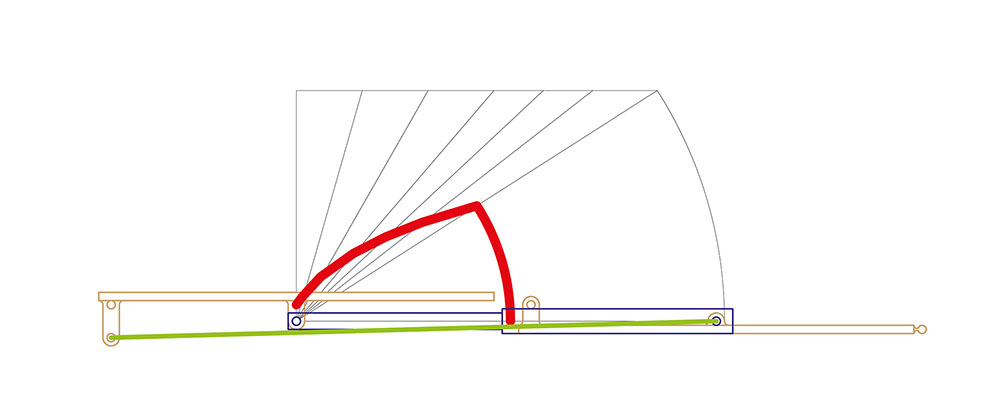OSCAR WONG
Kitchen Cabinet Accessibility
For this challenge, students were asked to design a modified kitchen cabinet that simplified access to the top shelf - areas that usually need a chair to reach.
Link to Challenge
My solution to this challenge was a series of rails and linkages that brought the top shelf down to the height of the previous shelf. In these drawings, the brown represents the two shelves. The lower shelf is fixed in place in the cabinet and simply serves as a reference point here. The top shelf has a knob at the front, to which would be tied a cord so that users can pull down the top shelf.
The blue piece is a telescoping steel rail. There is a pin on the outside of the rail that rides in a cam groove (red), which is cut out of a piece of sheet metal. This blue/red assembly should be mirrored on the back two pins, creating a parallel four-bar linkage - however I have omitted it here for clarity.
The final part is a combined extension spring and dashpot (green), which anchors the shelf in place when lowered and also helps return it to the upper position. The spring provides the force, and the dashpot smooths and slows down any movement (think of the opening of a car trunk).
In this drawing, I've used example lengths of shelves 24 inches long and 12 inches apart. The telescoping rod's contracted length is 15 inches and it has a throw of 13 inches.

Initial position of the shelf. This challenge was solved before I made heavy usage of CAD, so it was done in Illustrator.
To bring the top shelf down, the user pulls on a cord attached to the knob on the top shelf. This pulls the shelf forward, extending the telescoping steel rail, which follows the cam groove. The shape of the cam groove is a trigonometric function, so that the overall movement of the shelf is horizontal. This allows it to clear any items that might be placed on the lower shelf. The thin black lines show the position of the telescoping rail as it travels along this path.

Extended position of the shelf. Movement up to now is horizontal, and the steel rail is at its maximum length.
At the maximum travel of 13 inches, the cam path switches to a simple circular path, which brings the top shelf down in a traditional parallel four-bar linkage. As it reaches the bottom, the green spring "snaps" over the forward hinge. This acts as a toggle lock, and the spring force is now keeping the shelf down instead of up.
At this point, the shelf is lowered all the way, and the user can easily access and modify its contents.

Downwards position of the shelf. Note that the bistable action of the green spring now pulls the shelf downwards.
To return the shelf to its upward position, the user simply needs to push it up slightly, past the toggle locking point, so that the green spring is now above the forward hinge. The spring tension will then return the shelf and its content back to their original place, while the dashpot prevents any sudden jolts that could spill the contents of the shelf.
This solution is effective because it's relatively simple (no motors, electronics, etc), doesn't require the user to stand on a chair, and it's very intuitive - simply pull the shelf towards you, and push it back up when you're done. It's also child-safe, as the user can untie the cord if they want the materials on the top shelf to be unreachable to younger children for whatever reason, although this defeats the purpose of the mechanism by turning it into a regular shelf.
